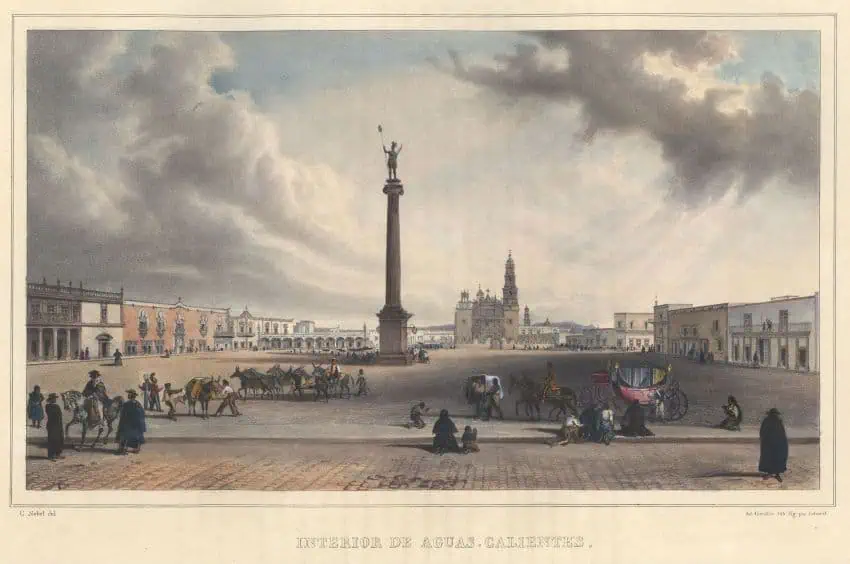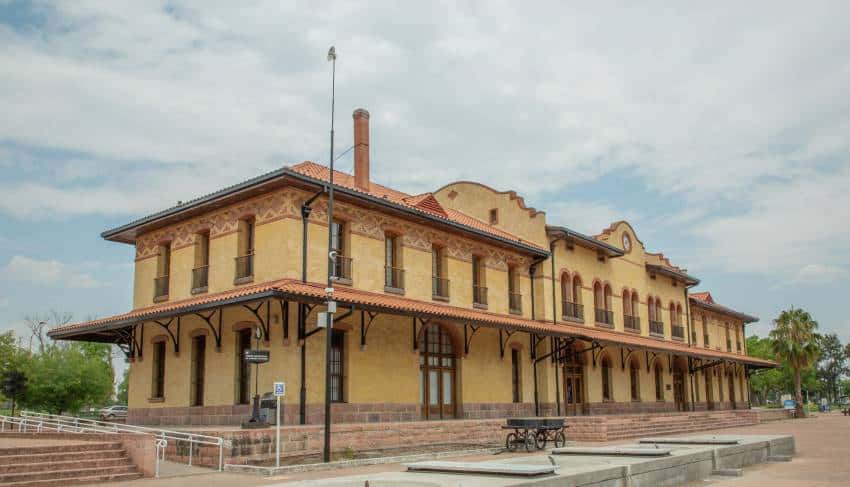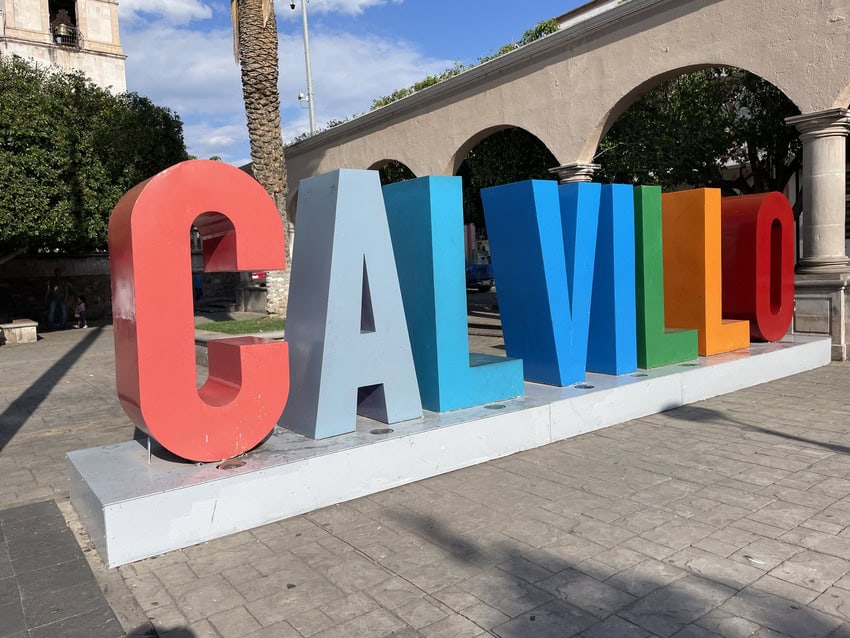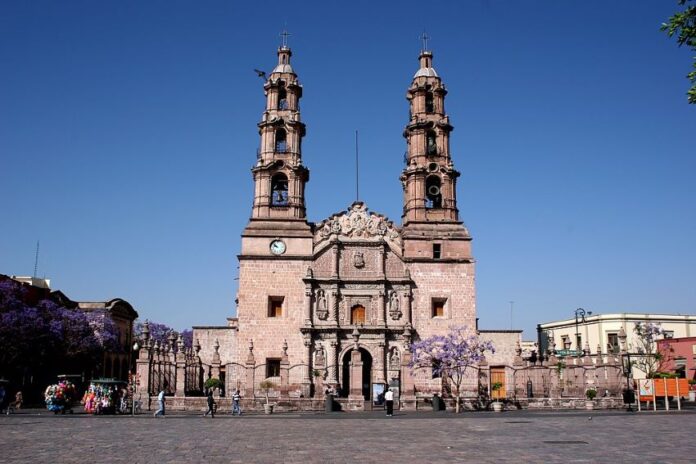Of all the major cities in Central Mexico, Aguascalientes was one of the last my husband and I visited, mainly because we’d heard it was large and industrial. When we finally made it there in 2020, we weren’t expecting much. Barry and I have since decided the city needs to do a far better PR job: it’s now our favorite Mexican city outside Guanajuato, where we live part of the year.
Unlike Querétaro, Aguascalientes city isn’t surrounded by wine country, and unlike San Luis Potosí, it doesn’t have the nearby majestic beauty of the Huasteca. But that also means it isn’t crammed with tourists. In fact, it was only last month, during our third visit that we finally spotted other foreigners in Aguascalientes, a Canadian couple.

We keep going back, and here’s why.
Plaza de la Patria
Aguascalientes’ ample, people-friendly central square is dominated by large fountains, benches and a huge cathedral that dates to 1704. It also boasts the Patio de las Jacarandas, an innovative public art piece built for the 100th anniversary of the Aguascalientes Convention that recreates the Portal de Jesús, a colonial-era arcade.
The traditional barrios
On our first visit to the city, we went to the helpful local tourism office and picked up a map of the barrios of Aguascalientes, each with its own church and garden. The first we visited was the Encino neighborhood, where we checked out the Templo del Encino, dedicated to the Black Christ of the oak tree. Nearby is the José Guadalupe Posada museum, named for the famous Mexican caricaturist who created La Catrina, Mexico’s emblematic grinning skeleton cartoon.
Later we checked out the neighborhood of Guadalupe, with its baroque Templo de Guadalupe and garden full of ash and poplar trees. Nearby are the city’s oldest cemeteries, De la Cruz and Los Angeles. We love wandering around gravestones, and both cemeteries feature paintings, ironworks and sculptures made from marble and the local pink cantera stone.

Walking west from the cathedral about 15 minutes, is the Jardín de San Marcos, one of our favorite outdoor spaces in all of Mexico, which we return to repeatedly. Visitors enter through a huge gate flanked by a low wall with ornamental columns that surround the entire park. The garden is graceful and shady, lined with trees, pathways and benches. This neighborhood is one of the best known in Aguascalientes due to its status as home to the Feria Nacional de San Marcos, which attracts visitors from all over the world and is held in April and May.
Climb El Picacho
This eight-thousand-foot-high hill, also called the Cerro del Muerto, is about 20 minutes north of the city, on the way to the Pueblo Mágico of Calvillo. You can climb a steeper, shorter route to the top or a longer, more gradual route that goes behind the peak. A small entrance fee is charged.
Midweek, there’s no one there, but the last time we visited was during a three-day weekend, and on Monday, hordes of adults, kids and dogs, were hiking. Our taxi driver told us that the Sunday or holiday tradition is to climb the peak, then go home for a lunch of borrego, or barbecued lamb.
Visit Aguascalientes’ museums
I enjoyed the Museo de Arte Contemporáneo, where I chatted with a staff member, hearing all about his divorce, his three adult children and his interest in learning danzón, a slow, measured partner dance originally from Cuba but popular in Mexico. “I married at 17,” he said. “Too young?” I asked. He nodded ruefully.

Because we love trains, we had to visit the Museo Ferrocarrilero, located in Barrio de la Estación, where we learned about the region’s history as a major railway hub, admiring the restored train station and the variety of historic and modern train cars, including the former presidential car of Lazaro Cardenas, who served as Mexico’s president from 1934 to 1940.
On the way to the train museum, we visited the Templo de San Antonio, an architectural jewel and one of the city’s most important historic edifices. Built between 1895 and 1908 in a pastiche of styles, it has neoclassical, Baroque, Gothic, Moorish and Russian features. It also has a double-stained glass dome, three towers and vaulted ceilings.
Try the hot springs
During our visit in January of 2023, the hot springs which gave the city its name were disappointing: they weren’t very hot. We were told they were hotter in some months than others, but reading online, I saw other complaints that they were lukewarm. In the hot season, you might enjoy the tepid temperature.

Explore Calvillo
The Pueblo Mágico of Calvillo is about 45 minutes from Aguascalientes. It boasts a Christ the Redeemer statue on top of a set of steep steps and the Museo Nacional de los Pueblos Mágicos, the only museum in the country dedicated to preserving and showcasing the folklore, traditions and crafts of the 177 towns that make up the Pueblos Mágicos program.
Most notable about the town, though, is its signature agricultural product. Billing itself as the Guava Capital of the World, Calvillo is home to over 4,500 guava producers, and pastries and other treats made with guava are sold all over town.
Three times so far, and counting
We know we’ll be back. Besides loving the parts of the city we’ve already seen, we know there’s always something else to explore. For example, we just learned that Aguascalientes is the most bicycle-friendly city in the country, so we’ll rent bikes next time. And we always appreciate the city’s friendly and unpretentious people.
Louisa Rogers and her husband Barry Evans divide their lives between Guanajuato and Eureka, on California’s North Coast. Louisa writes articles and essays about expat life, Mexico, travel, physical and psychological health, retirement and spirituality. Her recent articles are available on her website, authory.com/LouisaRogers
